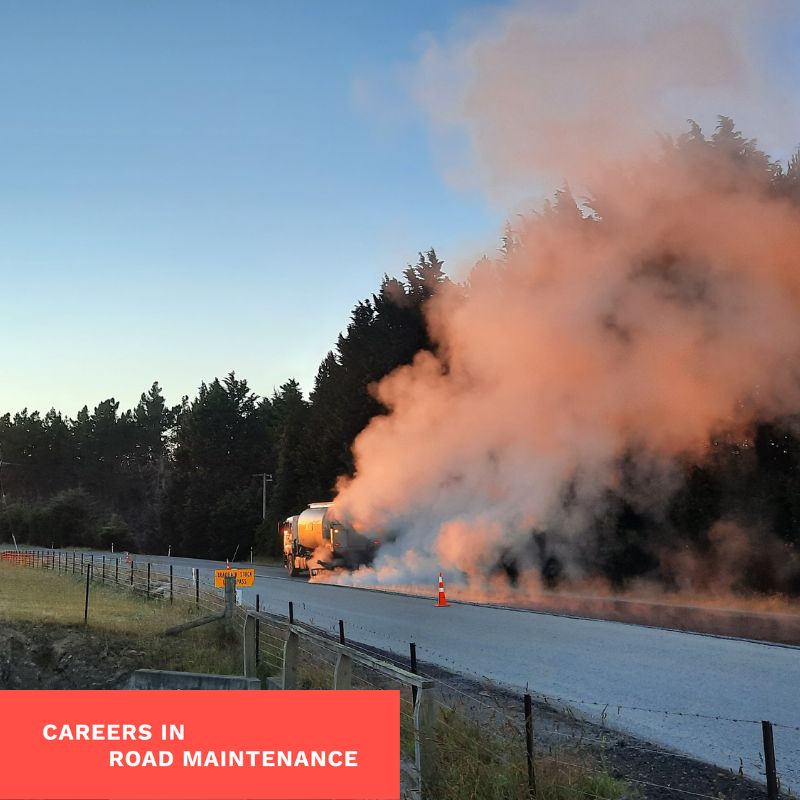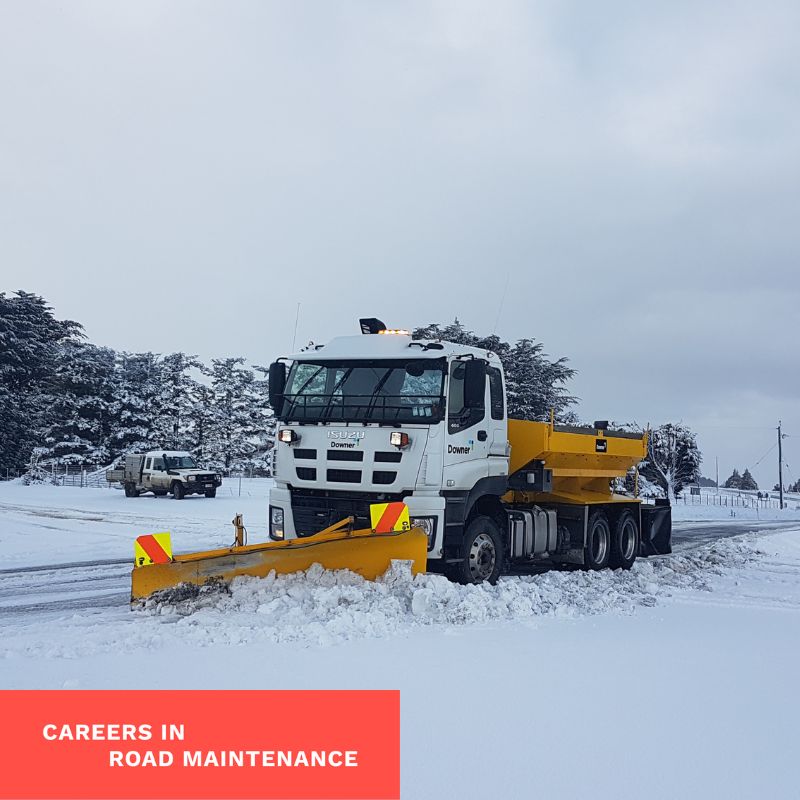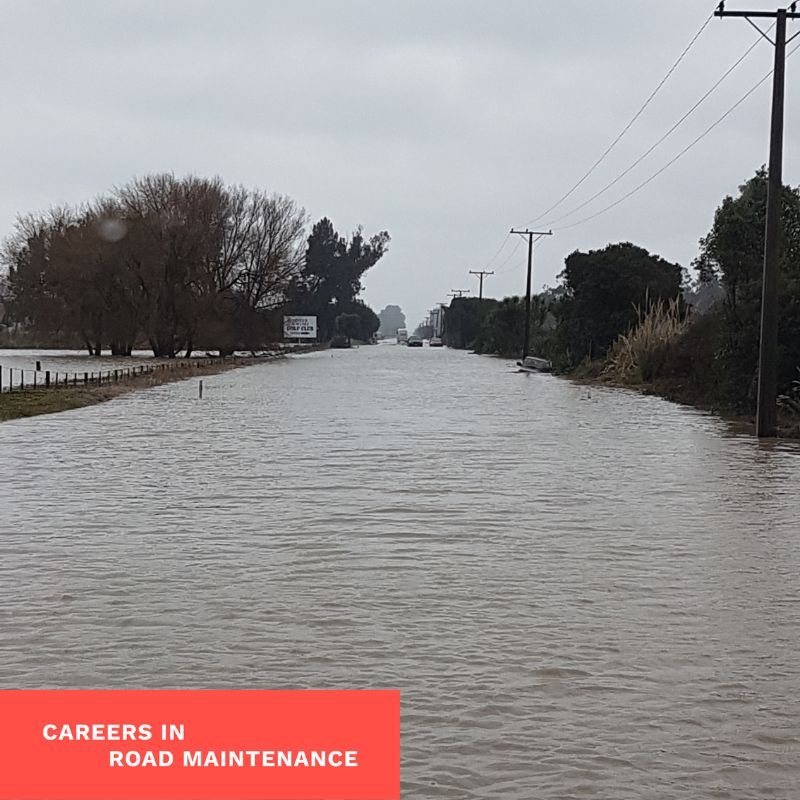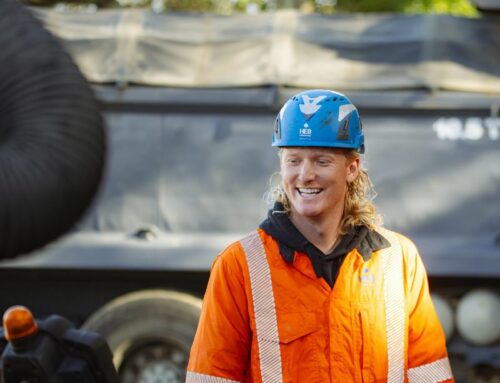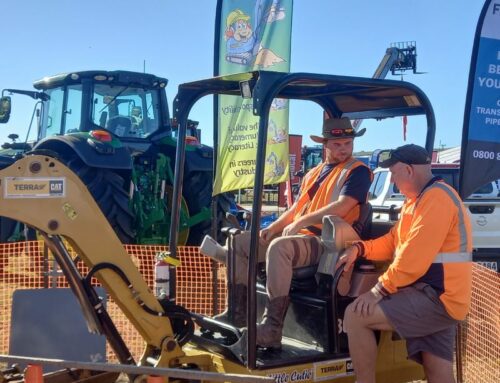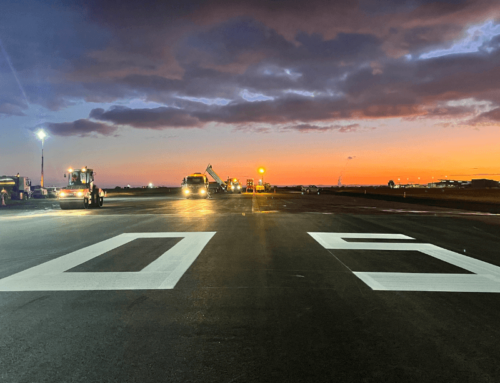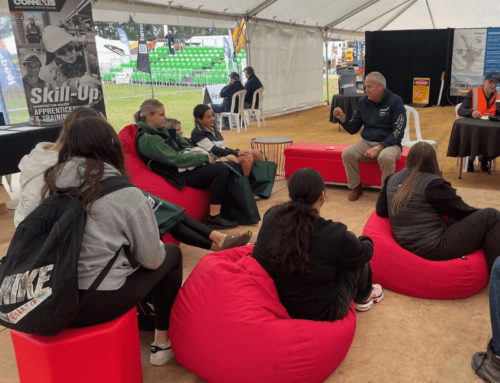Working on Otago’s roads during winter takes a fair bit of grit. Luckily, 28-year-old Dan Botica is a grit truck operator. He’s also one of those rare Southern blokes who believes pitting himself against the elements is precisely what keeps the job interesting.
“When I started out in road maintenance the snow clearance period was my favourite time,” he says.
“You see some gnarly stuff and witness a side of nature a lot of others don’t see. There’s a sense of excitement and I still think that 2am phone call telling you its snowing and it’s time to get up to take on the challenge is more invigorating than a 6am alarm clock will ever be.”
Dan started out in traffic management with Downer in 2014 and has since worked his way up to the role of Contract Engineer for the Coastal Otago Network Outcomes Contract. The contract sees Downer maintain more than 770 km of state highway for Waka Kotahi and Dan is charged with looking after and scheduling road maintenance crews across the region, as well as scoping, pricing and coordinating replacements of road safety signs and barriers.
Despite his growing responsibility, Dan still spends plenty of time in the field, including operating snow ploughs and grit trucks when the need arises. His Class 4 Truck Driver Licence and grit truck experience is invaluable, so he jumps into the cab to help his team if winter’s conditions call for it.
Earlier this month heavy snow closed part of SH87 – the Outram to Middlemarch highway – and Dan’s team was needed to clear it.
“There were some deep drifts the team had to shift, up to one and a half metres of snow fell in some places,” he says.
“Luckily snow’s reasonably easy to deal with, but black ice is more of a challenge. I’ve slid on black ice three or four times over the years while in a grit truck, you just keep off the throttle and do what you can to get traction – it’s a pity the truck puts the grit out behind you and not in front,” he laughs.
Memorable days on the job
Dan says he’s had plenty of other memorable times while working in road maintenance. There are jokes with workmates and the satisfaction of seeing maintenance projects get over the line but if you speak with Dan for any length of time it becomes clear it’s the big weather events that leave an impression.
“I’ll always remember our effort to re-open roads after severe flooding in Otago and Canterbury in July 2017,” he says.
He was rostered on in Oamaru when the flood waters came through, and their speed and scale left him cut off from the rest of the team.
“It was a major flood event, cars were completely submerged and you had to react quickly. I had to get out there as a bit of a first responder, putting up signage as quick as possible to make sure people were aware of the dangers and just how deep it was.”
Working his way up
Like many in the industry, Dan started out wielding a Stop-Go sign and working in traffic management. It wasn’t long before he was given the chance to develop some skills patching and chipsealing – an opportunity he took with both hands – and made his way into the position of foreman, gaining his Class 2 and Class 4 heavy vehicle licences in the process.
In 2020 he moved from foreman into the water and chipsealing teams while studying a Diploma in Civil Engineering (Level 6), and then in 2022 he found himself in his current role of Contract Engineer.
“I enjoy it and I wish more people knew about the opportunities in civil. I went from high school straight to university because I thought you had to get a degree, but it didn’t pan out. I would’ve saved myself a few years and a heap of student debt if I’d come straight into the civil industry.”
Advice for career seekers
Dan’s advice to people considering a job in civil is give it a go – sooner, rather than later.
“There are heaps of entry level roles and they are a great foundation. I’m glad I did my time on the ground because it gives you a good understanding of what’s required practically by those working in the field.”
It’s a varied industry, and there are many directions people can go in, from road construction and asphalting to water infrastructure and bridge building, he says.
“There’s something for everyone.”


